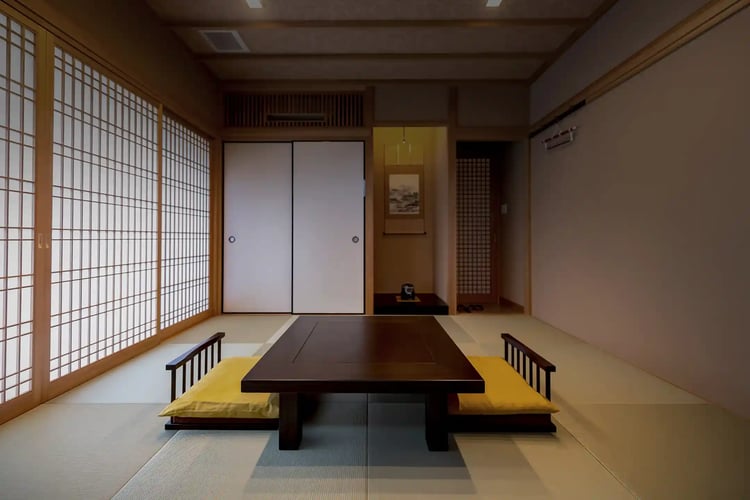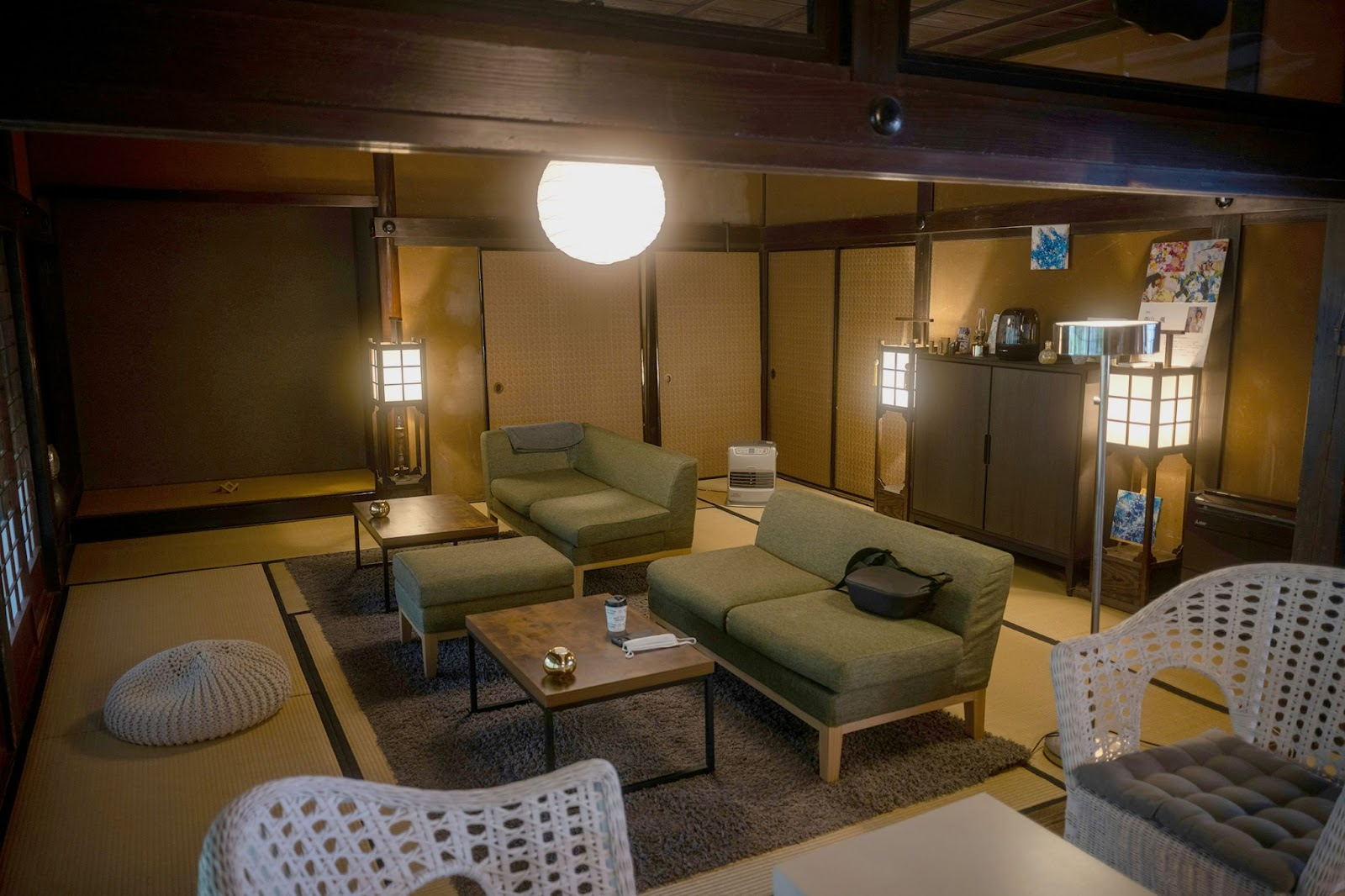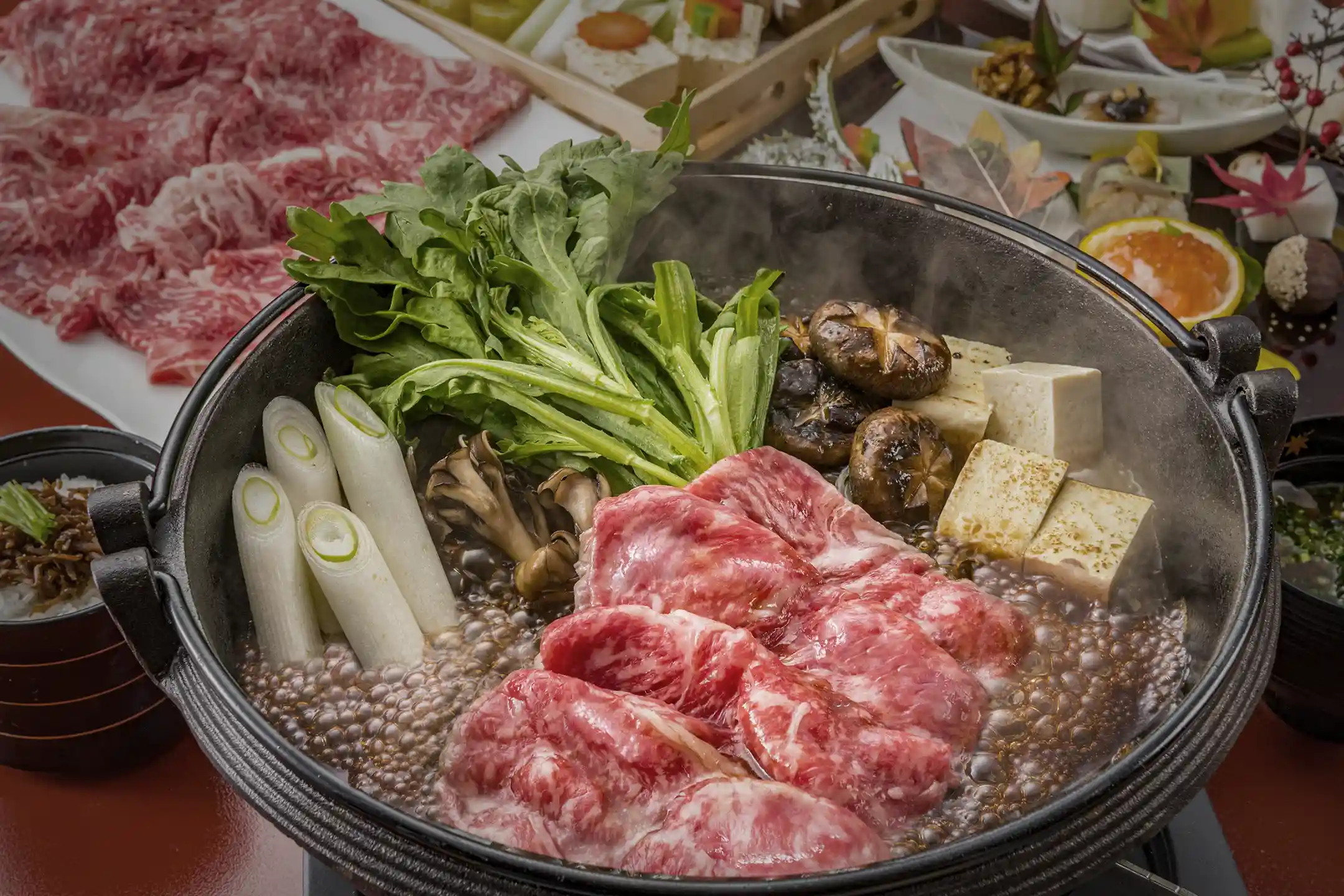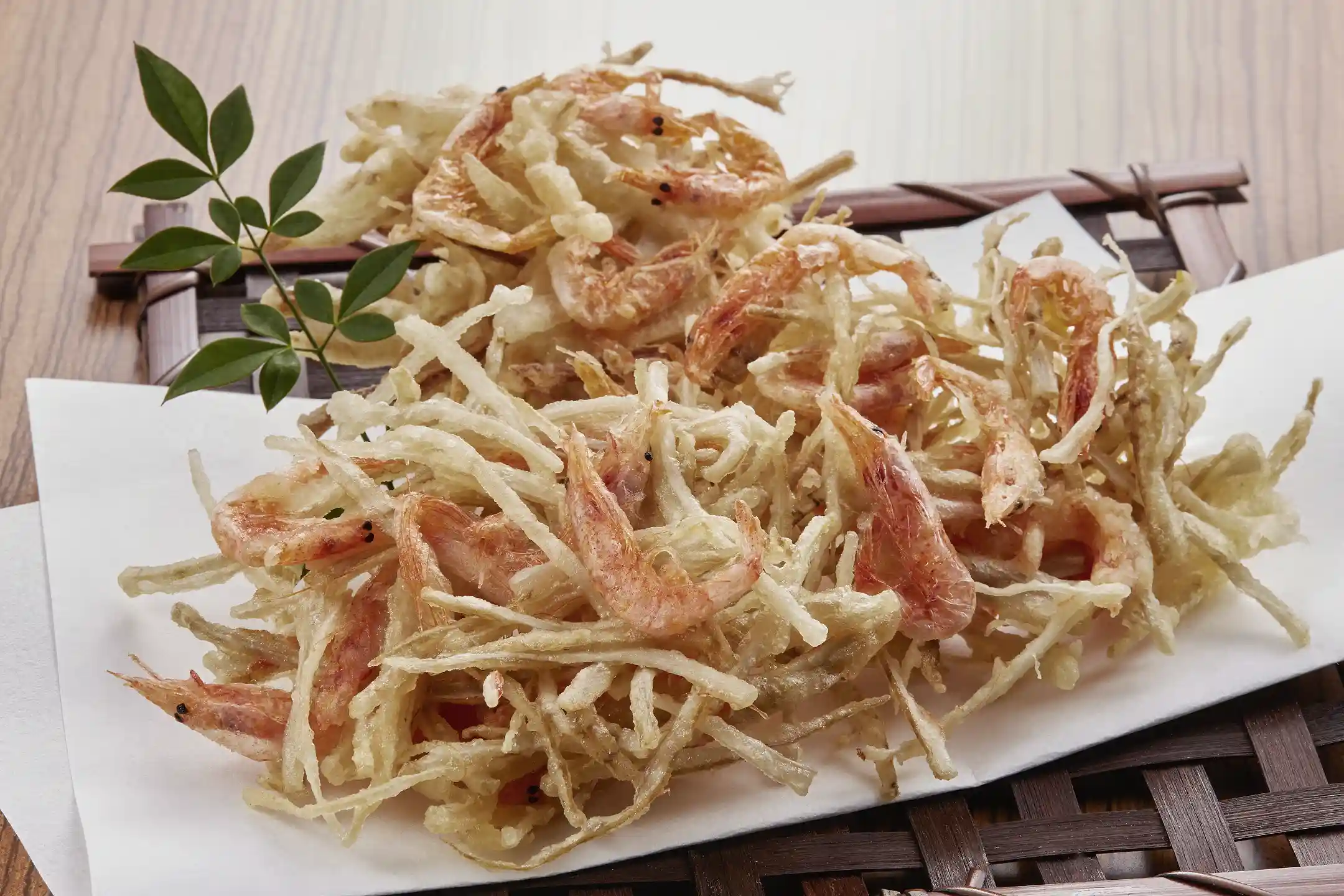This is the definitive guide to choosing a ryokan near Tokyo for celebrating a special anniversary. When you step away from the city’s rush and settle into a space wrapped in the calm of Japanese aesthetics, the time you share deepens your bond and becomes a luminous memory you’ll carry with you. If you’ve been searching for “ryokan near tokyo,” this expert guide distills what truly matters so you can book with confidence.
To help you navigate even your very first ryokan stay, this guide covers everything: how a ryokan differs from a hotel, the typical flow of a stay and essential etiquette, curated information on luxury ryokan by area, seasonal model itineraries, and how to savor the dining experience. If you’re ready to mark a life milestone, plan a trip near Tokyo where luxurious facilities meet a deep sense of privacy—and let a ryokan’s hospitality set the stage for your celebration.
Ryokan Basics and How They Differ from Hotels (Etiquette and Stay Flow)
A ryokan represents a form of lodging where Japan’s unique aesthetic sensibilities and spirit of hospitality converge, offering a stay experience fundamentally different from that of a hotel. While hotels emphasize convenience and efficiency, a ryokan is designed so that both its spatial layout and service flow create a sense of the extraordinary, apart from daily life. Surrounded by traditional elements such as tatami‑mat rooms, shoji screens, and yukata robes, guests move through a process—from removing their shoes at the entrance to settling into futon bedding—that allows them to experience Japanese living culture firsthand.
What a Ryokan Is——A Cohesive System of Japanese Design and Hospitality
A ryokan is a distinctly Japanese style of lodging, defined by traditional elements such as tatami‑mat rooms, yukata robes, and shoji screens.
You remove your shoes indoors and enjoy the feel of tatami under bare feet or socks, and you’re welcome to move through corridors and lounges in your yukata—part of the relaxed charm. Guest rooms often feature a tokonoma (alcove) where a hanging scroll and seasonal flowers are artfully displayed.
This most formal area of a Japanese room becomes a symbolic welcome, with fine art or an ikebana arrangement greeting you at a glance. The service structure differs from that of a hotel: a nakai (attendant) often looks after you from arrival to futon preparation and meal service, sometimes as your dedicated staff member for the entire stay.
Because one staff member is assigned to each room, the ryokan can respond to your preferences with finely tuned care—an expression of omotenashi, Japanese hospitality. After check‑in, you’re usually served tea and sweets in your room, and you can consult about mealtimes and bathing times so you settle in at your own pace.
At night, your nakai lays out your futon on the tatami and gets everything ready for sleep, so even first‑time guests can feel completely at ease.
%20prepares%20tea%20for%20you.webp?width=750&height=500&name=A%20nakai%20(ryokan%20staff%20member)%20prepares%20tea%20for%20you.webp)
Stay Flow——Pacing Your Time from Arrival to Breakfast
Time moves more gently at a ryokan. Check‑in is typically around 3:00 p.m., similar to hotels, but because many plans include dinner, it’s best to arrive by about 6:00 p.m. at the latest.
Slip off your shoes at the entrance, follow your nakai to your room, and take a breath over tea. Then unwind either in the large communal bath or your private open‑air bath. The spacious communal baths are often fragrant with hinoki cypress, while open‑air rotenburo let you soak as you gaze at the surrounding scenery.
Staff may encourage you to try the large communal bath; for Japanese travelers, hot springs are indeed a highlight of any trip.
Most ryokan begin dinner between 6:00 and 7:00 p.m., so an ideal rhythm is to bathe before dusk and then sit down to your meal as the evening sky softens. Watching the sunset and then savoring kaiseki after your bath is a pleasure in itself.
After dinner, enjoy the quiet night at your own pace. The usual flow is to recharge the next morning with an early soak and a Japanese breakfast before checking out. Because dinner is served within set time windows, be aware that arriving very late may mean dinner cannot be provided. If your arrival might be significantly delayed, call ahead to let the ryokan know.
Onsen and Bathing Etiquette——Tattoo Policies and Private Baths
Bathing in an onsen—a highlight of any ryokan stay—comes with Japan‑specific etiquette. Before entering the large bath, first rinse yourself with warm water (kakeyu) to cleanse your body so you don’t carry any dirt into the tub. It’s considered proper manners to shower before soaking, which helps keep the water pristine(*1).
If you have long hair, tie it up to keep it out of the water, and avoid using towels in the bath. Public baths are gender‑segregated and you bathe nude.
Regarding tattoos, note that some traditional communal baths still refuse entry to guests with tattoos. While more onsen now accept tattoos, they remain in the minority. Policies vary by facility; some allow small tattoos if they’re covered. For peace of mind, confirm in advance—and if you’re concerned, simply check with the ryokan before booking.
If you prefer privacy, look for a kashikiri‑buro (private or “family” bath). These are lockable baths you reserve for a set time to use on your own. You can request one when you book or ask the front desk about same‑day availability.
For an anniversary, consider a room with its own open‑air bath so you can soak just the two of you—lingering under the stars or looking onto a garden with no one else around.

Dining Formats——In‑Room, Private Room, and Dining Hall
Dinner and breakfast at a ryokan are major pleasures, and service styles vary. The most private is in‑room dining (heya‑shoku), where meals are served right in your guest room.
With your nakai bringing each course and serving you in‑room, you may not see other guests at all—your time together remains fully your own. Even some luxury properties don’t offer in‑room meals, in which case you’ll dine in a “private dining room” or the main dining hall.
A private dining room isn’t your guest room but is reserved per party, affording nearly the same level of privacy. Dining halls host multiple parties in one space, yet seating is often generously spaced or discreetly partitioned so conversations don’t carry.
Confirm your preferred dining style when booking. If you’re planning a surprise for your anniversary, in‑room or private‑room dining can be especially reassuring, letting you celebrate without distractions. And if you have dislikes or allergies, share them beforehand—many ryokan will adjust the kaiseki menu to suit you. For dietary or cultural preferences (vegetarian/vegan or Muslim‑friendly), advance notice helps the property prepare appropriately(*2).

Area Guide to Ryokan Near Tokyo——Luxury Stays 90–120 Minutes Away
Within just 90 to 120 minutes from Tokyo, you’ll find a variety of destinations where you can step into an extraordinary world apart from the everyday—ideal for an anniversary trip. These areas are not only easily accessible from the city but also showcase distinct natural beauty and cultural character, making them prime choices for a ryokan near Tokyo stay. Whether you prefer a resort surrounded by mountains and lakes or a hot‑spring town with sweeping ocean views, ryokan in every region blend traditional Japanese aesthetics with modern comfort.
Hakone——A Classic Resort Where Art Meets Nature
Hakone is one of the easiest getaways from the Tokyo area and has long been beloved by cultural figures and international travelers alike. With views of Mt. Fuji across Lake Ashi, mountains that change color with each season, and a constellation of museums, Hakone blends nature and the arts into a singular atmosphere.
Here you’ll find everything from storied traditional ryokan to contemporary luxury inns, including properties centered on suites and rooms with open‑air baths—offering a distinct sense of privacy. Some ryokan provide shuttle service from the nearest station, so you can tour Owakudani and Lake Ashi and still check in smoothly afterward(*1).
Time at a renowned Hakone ryokan—one that marries classic Japanese architecture with modern comfort—feels exactly right for a special anniversary.
Izu (Atami, Ito, Shuzenji)——Seascapes and Fine Cuisine in a Hot‑Spring Region
Facing the Pacific, the Izu Peninsula pairs dramatic ocean views with seafood‑driven cuisine. Atami is particularly popular, reachable by shinkansen from Tokyo in about 40 minutes, and famous for its fireworks festivals held throughout the year (with especially frequent summer shows).
Ryokan perched on seaside hills let you look down on the great blooms of fireworks from your room or terrace, and some properties feature infinity‑style open‑air baths that seem to merge with the horizon. Luxury ryokan are scattered across Ito and Shuzenji as well, each with its own character.
In Shuzenji, for example, you’ll find graceful inns built in the sukiya style and auberge‑like properties devoted to gastronomy, where kaiseki showcases fresh spiny lobster and splendid alfonsino. Along the coast, ocean‑view dining rooms set the scene for watching the sunset as you dine—quintessentially romantic Izu moments.

Yugawara——A Quiet Hideaway for Grown‑Up Time
Between Hakone and Atami lies Yugawara Onsen, ideal if you want to slip away from the crowds and savor quiet time together.
Ryokan here tend to be smaller and privacy‑focused. You’ll find hideaways with around 10 rooms, some as detached villas, and others with only a few buildings nestled within expansive Japanese gardens—layouts designed so you needn’t cross paths with other guests.
In open‑air baths along the mountain stream, the only sounds are water and birdsong as you soak while taking in seasonal scenery. If your goal is to forget the city and simply cherish unhurried time together, this area excels.
Nikko and Lake Chuzenji——World Heritage and Lakeside Poise
Home to the World Heritage site of Nikko Toshogu Shrine and the shores of Lake Chuzenji, Nikko combines history with highland nature. Express trains bring you from central Tokyo in about two and a half hours, and each season offers its own beauty—fiery foliage in autumn and pristine snowscapes in winter.
In recent years, luxury properties have grown in number, including intimate, high‑service inns and all‑suite ryokan with in‑room hot‑spring baths; curated lists frequently spotlight small, special‑occasion hot‑spring inns suited to anniversaries(*2).
Lakeside inns frame sweeping views of Lake Chuzenji from guest rooms and open‑air baths, inviting you to spend the evening talking under a canopy of stars—a quietly elegant resort experience.

Karuizawa, Kusatsu, and Manza——Highland Calm and the Allure of Sulfur Springs
Karuizawa, famed as a summer retreat, and Kusatsu/Manza, known for excellent sulfur springs, are also superb for an anniversary. Karuizawa has chic luxury ryokan set amid forests; in summer you can dine on the terrace in crisp highland air, then stargaze into the night.
Kusatsu features an atmospheric hot‑spring town centered on its steaming Yubatake, while quiet luxury properties sit slightly apart on the hills—places to claim both renowned waters and silence. In Manza, at 1,800 meters above sea level, winter brings a world of snow; you can soak in milky‑white sulfur springs while enjoying a snow‑view rotenburo(*3).
Whether you drive or take direct buses from the city, these highland areas paint your memories with complementary charms: cool summers and snow‑view baths in winter.
Boso (Kamogawa, Tateyama)——Ocean‑View Stays Where Sea and Sky Take Center Stage
In southern Boso, Chiba (Kamogawa, Tateyama), ocean‑view ryokan face the Pacific in grand, open vistas. Many properties promise ocean views from every room, so the blue expanse outside your window helps you shed your everyday mindset.
From hilltop inns, nothing interrupts the horizon; the sun rises from and sinks into the sea—drama you can enjoy in private. Some rooms come with dedicated open‑air baths designed so the water seems to meet the ocean’s edge.
Despite being close to Tokyo, the region’s mild climate makes it possible to enjoy gentle seascapes even in winter—perfect if you’d like to spend your anniversary leisurely by the water.
How to Choose an Anniversary Ryokan——Compare Along Four Axes
When choosing a ryokan for an anniversary, it’s important to have guiding criteria that feel right for you—not simply selecting a property because it is “famous” or “luxurious.” The best choice will differ depending on whether you value quiet and privacy, are drawn to architectural and design beauty, or wish to prioritize attentive hospitality and encounters with local culture. In this chapter, we introduce ways to compare ryokan across four perspectives: privacy, design, hospitality, and local character with sustainability. Keeping these viewpoints in mind will help you discover the one property that truly suits your anniversary.
Privacy by Design——Quiet and the Feeling of Having It All to Yourselves
For a day that matters, the setting should let you enjoy time together without worrying about those around you. As a rule, the fewer the rooms, the quieter the property and the more attentive the staff can be, which raises the level of privacy.
You’ll often hear that “small, luxurious hot spring inns with 25 rooms or fewer are ideal for anniversaries”(*1); hideaways with about 10–20 rooms are especially popular. If the property offers detached villas or rooms with private open‑air baths, you’ll minimize the chances of crossing paths with other guests.
Availability of private baths and private dining rooms also shapes how private your stay feels. Before booking, check “How many rooms are there?”, “Is in‑room dining possible?”, and “Are there private baths?”—then compare whether the quiet you want matches what the property offers.
Design and Worldview——Your Standard of Sophistication
Architectural style and interior beauty differ markedly from ryokan to ryokan—and that can influence how satisfied you feel with your anniversary stay. Spaces in natural materials, details drawn from traditional crafts, and thoughtful lighting and furnishings: in a well‑designed ryokan, you enter and you’re immediately in another world.
For instance, at “Kominka‑Fu Hanare‑ya Warakutei” in Okuhida Hirayu Onsen, a more than 150‑year‑old farmhouse has been relocated and rebuilt, and throughout the property you’ll find regional craftwork that enriches the sense of place.
Some ryokan also attend closely to sound and scent, engaging all five senses in your relaxation. While photogenic design is a plus, choosing harmony over excess tends to yield spaces where you can truly settle and breathe.
Hospitality——Support That Brings Your Vision to Life
The quality of the ryokan team’s care can make or break your anniversary plans. Before you book, consider how attentively they respond to inquiries, whether communication in English is possible, and whether they have strong experience with surprises.
Some ryokan even designate an “anniversary concierge” who will help you plan a cake or bouquet, or coordinate decorations on‑site(*2). It’s also wise to scan past guest reviews for comments on staff attentiveness.
At smaller properties, fewer but seasoned staff often remember faces and preferences, offering warmly personal service.

Local Character and Sustainability
Since it’s a special trip, pay attention to the property’s location and initiatives. Ryokan that emphasize local sourcing and environmental care add depth to your experience.
For example, at “Kissho Yamanaka” in Ishikawa, used cooking oil is recycled and local ingredients are proactively used to reduce food miles. The property also presents performances of Kaga Taiko, a regional performing art—helping carry local culture forward(*3). Seeing efforts like these makes your stay feel like both a cultural encounter and a contribution to the community, enriching your memories all the more.
Recently, many ryokan have taken further steps: asking about your culinary preferences ahead of time to reduce food waste, adopting amenities that avoid single‑use plastics, and offering activities that connect you with local history and craftsmanship. When choosing, look for the property’s unique sense of place and guiding ethos.
Finally, as you compare candidates, list the nonnegotiables to avoid mismatches: “How quiet is it?”, “What view do we want (sea, mountains, town)?”, “Bed or futon?”, “Do we need English support?”, “Will the menu match our tastes?” Answering questions like these clarifies which property will truly satisfy you both.
Seasonal Model Plans——One or Two Nights at a Ryokan Near Tokyo
A ryokan stay near Tokyo reveals completely different faces with each season. In spring, cherry blossoms and fresh greenery; in summer, cool highlands and fireworks; in autumn, colorful foliage and moon‑viewing; and in winter, snowy landscapes paired with hot springs—all offering unique charms throughout the year. Even on rainy days, thoughtful indoor spaces and garden scenery transform the atmosphere into something special. In this chapter, we present seasonal model plans for one‑ or two‑night stays, suggesting how to make the most of your limited time in a richly rewarding way.
Spring——Cherry Blossoms and Fresh Green
Spring brings a tapestry of blossoms and new leaves. Pairing hanami with hot springs is a beloved approach for a ryokan trip near Tokyo.
In Hakone, for example, you might stroll along the cherry‑lined Hayakawa River for roughly 450 meters and then check into a mountain ryokan, where you soak in an open‑air bath with lingering views of snow‑capped Fuji. Wander under drifting petals at dusk by the river, then in the morning enjoy your guest‑room open‑air bath while gazing at ridgelines veiled in a soft spring haze(*1).
With two nights, spend day one visiting cherry spots, then day two hiking through the fresh green forest before savoring wild mountain vegetables grilled over an irori hearth. Spring’s delicate scenery and sense of life returning make a fitting backdrop to celebrate a new chapter together.
Summer——Cool Retreats and Fireworks
In summer, the key is to seek out coolness. At highland properties in Karuizawa, spend the day cycling through the woods or reading on a shaded terrace; after dark, look up at the stars from an open‑air bath in naturally cool air.
In seaside Atami, fireworks festivals held in summer are the main event. Some plans allow you to watch the displays from your room or a panoramic open‑air bath—wear a yukata and take in the great blooms across the night sky to anchor a special summer memory.
With two nights, you could swim or try marine sports on the first day, then cool off at hilltop museums the next, and cap the evening with fireworks from the ryokan. The contrast—daytime respite from heat and nighttime pageantry—has a way of drawing you closer together.

Autumn——Foliage and Moon Viewing
Autumn sets the stage for koyo and moon‑viewing. Near famed foliage spots in Nikko or Okutama, spend your day driving along ravines and lakeshores surrounded by brocade‑like mountains, then stroll through illuminated temples, shrines, or Japanese gardens at dusk.
Around the night of the harvest moon, some ryokan prepare a tsukimi setup on your terrace—dumplings and pampas grass—so you can quietly admire the full moon. Slipping into an open‑air bath in the crisp air, looking out at colored leaves framed by the moon, is a scene unique to the season.
If you stay two nights, let day one be for sightseeing and foliage, and day two for unhurried time with books or art at the inn; in the evening, sip local sake as you gaze at the moon—an autumn journey with understated elegance.
Winter——Snow‑View Baths and Seasonal Delicacies
Winter at a ryokan heightens the interplay between cold air and warm water. In higher‑elevation hot‑spring towns like Kusatsu and Manza, the snow‑view rotenburo is especially popular:
You soak as snow settles on your shoulders—the very essence of stepping out of the everyday. Dinner brings seasonal highlights: paper‑thin fugu sashimi, charcoal‑grilled crab, and warmed sake that reaches you to the core. With such winter treasures, hearts feel warm as well.
On a two‑night stay, you might gather around a nabe hot pot in a room with an irori hearth on day two, or enjoy snow‑view drinks in a lounge with a cozy kotatsu. Because winter draws the contrast between cold and onsen into focus, you may feel each other’s presence even more deeply—a trip that nurtures a lasting bond.
A Refined Way to Spend a Rainy Day
Even if rain finds you, a luxury ryokan offers its own pleasures. Settle into the lounge with coffee and a good book while the sound of rain deepens the quiet—a simple, indulgent hour.
At “Amayadori no Yado Ujogsoan” in Kyoto’s Tango region, a dedicated reading pavilion named “Kusamakura” sits deep in the garden, designed so rainy days become especially fulfilling. Many ryokan also offer indoor galleries for art viewing or in‑room pair massages—plans that keep you happily engaged regardless of the weather(*2).
Some even provide umbrellas for soaking in the open‑air bath—a charming experience in its own right. The garden through a fine curtain of rain is a special sight, and your photos can capture the tranquil sheen after rainfall or the steam rising from the baths—atmosphere you often can’t get on clear days. A well‑run ryokan gives you a rich, weatherproof stay.
Make Your Anniversary at a Ryokan a Treasured Memory
Marking a life milestone at a fine ryokan lets you reaffirm your bond and carve new memories together. In a setting apart from the everyday, you face one another and relax into wholehearted hospitality—an experience that leaves a deep impression you can’t find in ordinary life.
Use this guide to sketch out a plan that’s entirely yours. A private, luxurious hot‑spring ryokan stay becomes a keepsake that never fades, adding a brighter gleam to the years ahead.
Author Bio






/Kazunoko%20Matsumae-zuke%20(Herring%20Roe%20and%20Seafood%20Pickles).webp)